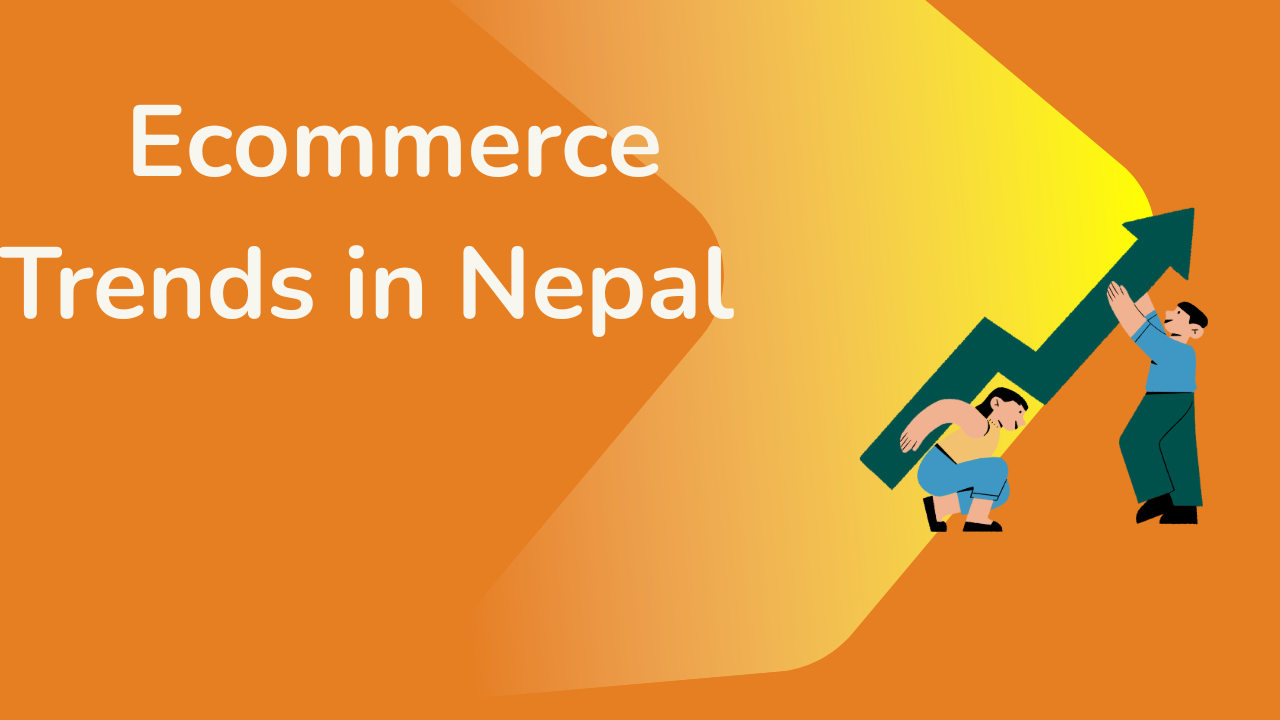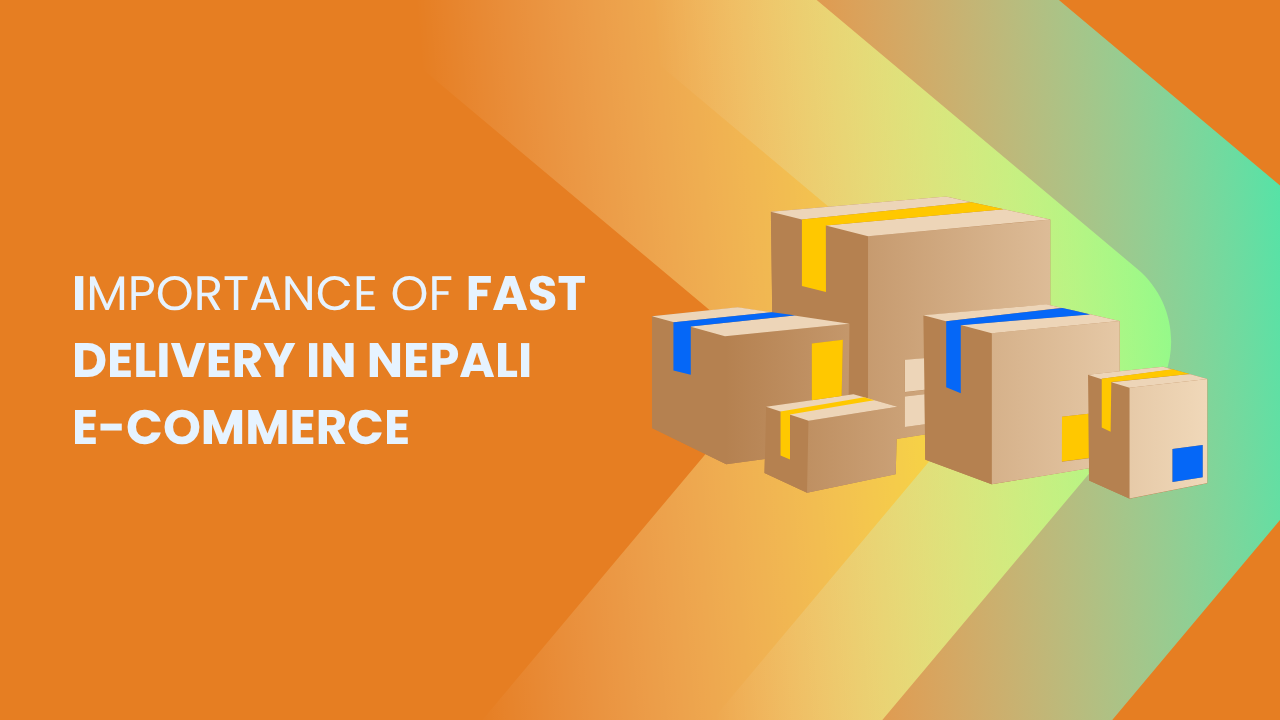Share this Article
Introduction
E-commerce in Nepal has seen rapid growth over the past decade. With the increasing penetration of the internet and smartphones, more Nepalese consumers are embracing online shopping for everything from electronics to groceries. Platforms such as Daraz, SastoDeal, and Foodmandu have played a pivotal role in shaping the e-commerce ecosystem. As online shopping grows, one of the most critical factors influencing consumer satisfaction is the speed of delivery. Fast delivery is no longer a luxury; it is an expectation. Consumers expect their orders to arrive promptly, and businesses that can meet this expectation often enjoy higher customer loyalty and repeat purchases.
In the context of Nepal, where physical infrastructure and logistics networks are still developing, fast delivery can be a significant differentiator. This article explores why fast delivery is crucial in Nepali e-commerce, how it affects business performance, the challenges unique to Nepal, strategies to improve delivery, consumer expectations, and future trends in the industry.
Evolution of E-Commerce in Nepal
Nepal’s e-commerce industry has evolved from small online marketplaces to a complex ecosystem of local and international platforms. Initially, online shopping in Nepal was limited to booking travel and hotel services or purchasing imported goods through international websites. Over time, local e-commerce companies emerged, providing a wide range of products such as electronics, clothing, household items, and groceries.
Urban areas such as Kathmandu, Lalitpur, and Pokhara became early adopters of online shopping, mainly because of better internet connectivity, higher income levels, and access to logistics services. As more consumers embraced digital transactions, e-commerce businesses expanded their offerings, including cash-on-delivery and mobile payment options. Despite these advancements, one critical aspect that determined a platform’s success was delivery efficiency. Platforms that could promise and consistently deliver fast service gained a competitive edge, establishing themselves as reliable and customer-friendly.
The Role of Fast Delivery in Customer Satisfaction
Customer satisfaction is the lifeblood of e-commerce. In Nepal, consumers have begun to expect timely delivery as an essential component of their shopping experience. Unlike traditional markets where buyers can instantly acquire products, e-commerce relies heavily on logistics and delivery. A slow or delayed delivery can quickly erode trust, discourage repeat purchases, and negatively impact brand reputation.
Fast delivery creates a sense of reliability and convenience. Customers who receive their products on time, or even earlier than expected, are more likely to develop a positive perception of the business. This perception extends beyond the immediate transaction. It encourages word-of-mouth recommendations, online reviews, and brand loyalty. In contrast, delayed or unpredictable delivery can frustrate customers, even if the product itself meets quality expectations. In a market like Nepal, where consumers are gradually becoming familiar with e-commerce, establishing trust through timely delivery is particularly crucial.
Impact of Fast Delivery on Business Performance
Fast delivery directly influences the overall performance of an e-commerce business. Businesses that prioritize quick fulfillment often see higher conversion rates because customers are more likely to complete purchases when they know the product will arrive promptly. Quick delivery can also reduce cart abandonment rates, which is a common challenge in online shopping.
In Nepal, where competition among e-commerce platforms is intensifying, businesses that offer superior delivery services gain a strategic advantage. These companies can attract customers from competitors who struggle with logistics delays. Furthermore, fast delivery can enhance operational efficiency by streamlining order management and inventory turnover. Satisfied customers are also more likely to return for future purchases, creating a steady revenue stream and increasing customer lifetime value.
Challenges in Achieving Fast Delivery in Nepal
Despite its importance, providing fast delivery in Nepal comes with unique challenges. One of the primary obstacles is the country’s geographical diversity. Nepal’s terrain ranges from densely populated urban areas to remote mountainous regions, making transportation and delivery complex and time-consuming.
Another challenge is the state of infrastructure. While urban centers have reasonably developed roads, many rural areas still face accessibility issues. Seasonal weather conditions, including monsoons and snow in higher elevations, can disrupt delivery schedules. Additionally, the addressing system in Nepal can be inconsistent, particularly in rural areas, making it difficult for delivery personnel to locate customers efficiently.
Logistics management is also a hurdle for e-commerce businesses. Limited warehousing facilities, lack of sophisticated inventory management systems, and dependency on third-party couriers can all slow down the delivery process. For new and smaller e-commerce platforms, these challenges can be even more pronounced, making it difficult to compete with established players who have more robust logistics networks.
Strategies for Enhancing Delivery Speed
E-commerce businesses in Nepal have adopted multiple strategies to overcome delivery challenges. Establishing local warehouses or fulfillment centers in strategic locations helps reduce the time required to deliver products to customers. These warehouses act as distribution hubs, allowing faster order processing and shipment.
Another strategy is the use of advanced logistics software to optimize delivery routes. By analyzing traffic patterns, distance, and delivery urgency, companies can plan the most efficient paths for their delivery personnel. This approach minimizes delays and improves fuel efficiency, which is especially important given Nepal’s varied terrain.
Real-time tracking systems are increasingly being implemented to enhance transparency. Customers can monitor their orders from dispatch to delivery, which builds trust and reduces anxiety about late shipments. Collaborating with local couriers familiar with specific regions also improves last-mile delivery efficiency. Local couriers often have better knowledge of roads, shortcuts, and addressing nuances, which is invaluable for timely delivery.
Finally, integrating predictive analytics and demand forecasting allows businesses to anticipate high-demand periods and prepare their inventory accordingly. This proactive approach ensures that products are readily available and can be delivered faster during peak seasons, festivals, or promotional events.
Consumer Expectations and Market Trends
Nepali consumers are becoming increasingly demanding regarding delivery times. Urban shoppers often expect same-day or next-day delivery, particularly for high-value or urgent products. As internet access improves and more consumers adopt online shopping, these expectations are likely to rise across the country.
Market trends reflect this shift. E-commerce platforms in Nepal are investing in logistics infrastructure, forming partnerships with courier companies, and employing technology-driven solutions to meet consumer demands. Businesses that fail to keep up with these expectations risk losing market share to competitors who can offer faster and more reliable delivery.
Technological Advancements and Their Role
Technology plays a crucial role in enabling fast delivery. Automated warehouse management systems, route optimization software, and predictive analytics have transformed how businesses handle logistics. Mobile applications allow delivery personnel to receive real-time instructions, update delivery status, and communicate with customers efficiently.
In Nepal, the adoption of these technologies is still in its early stages, but leading platforms are beginning to implement them to gain a competitive advantage. As technology becomes more accessible and affordable, smaller businesses are also likely to benefit, enabling a broader section of the population to experience fast delivery services.
Economic and Social Implications
Fast delivery in e-commerce has broader economic and social implications for Nepal. It contributes to job creation in logistics, warehousing, and courier services. Efficient delivery systems also facilitate trade, allowing businesses in remote areas to reach urban consumers and vice versa. This connectivity enhances economic inclusivity and supports small and medium-sized enterprises in expanding their customer base.
From a social perspective, fast delivery improves convenience and quality of life for consumers. It allows people to save time, reduces the need to travel for shopping, and ensures timely access to essential products, including food, medicine, and electronics. This is particularly important during emergencies or seasonal disruptions when access to goods can be challenging.
Future Outlook of Fast Delivery in Nepali E-Commerce
The future of fast delivery in Nepal is promising. As infrastructure improves, technology adoption increases, and consumer expectations evolve, e-commerce platforms will continue to innovate in logistics and delivery services. Companies that invest in advanced fulfillment systems, local warehouses, and partnerships with efficient courier services are likely to dominate the market.
The integration of artificial intelligence, machine learning, and predictive analytics will further enhance delivery accuracy and speed. Automation in warehousing and inventory management will reduce human errors and streamline operations. Additionally, increasing competition among e-commerce platforms will push businesses to continually improve their delivery performance, benefiting consumers across the country.
Conclusion
Fast delivery is no longer optional in the Nepali e-commerce market—it is essential. Timely and efficient delivery affects customer satisfaction, business performance, and market competitiveness. While Nepal faces unique logistical challenges, strategic investments in technology, infrastructure, and partnerships can overcome these obstacles.
For e-commerce businesses, prioritizing fast delivery not only enhances customer loyalty but also drives revenue growth and brand reputation. For consumers, it ensures convenience, reliability, and trust in online shopping. As Nepal continues to embrace digital commerce, the importance of fast delivery will only grow, making it a cornerstone of successful e-commerce operations.
Categories:
E-commerce Tips & Tutorials
Tags:
Online Store in Nepal
,
local businesses
,
e-commerce app
,
Small Business
,
strong brand
,
E-commerce







